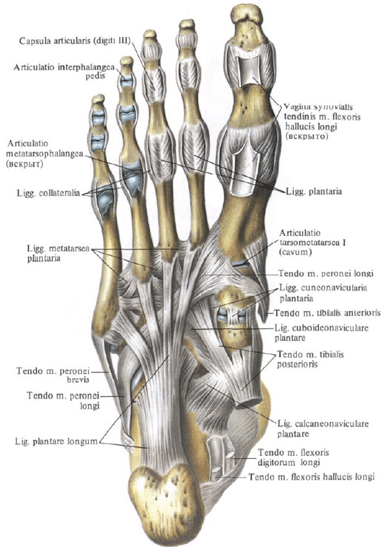Flat Feet and Slouched Posture – They are connected.
By Dr. Blessyl Buan
Imagine for a moment that you are a marionette.
If the tension in the strings is weak, your spinal alignment and your limbs will collapse.
Think of your strings as core strength and stability. If any area of the postural system is weak, it will affect the alignment of the whole kinetic chain in the body.
In other words, your foot posture communicates with the posture of your spine and pelvis. This communication travels bottom up and top to bottom.
When the marionette system collapses
When you are unable to maintain healthy alignment in your spine and pelvis due to lack of conditioning and lifestyle postures, you will start to experience foot symptoms. When you experience foot pain, you will also feel symptoms in your ankle, knee, hip and spine. This chain is called a kinetic chain.
Core Stability Subsystems
There are 3 subsystems that influence how posture is maintained in the body.
The Neural Subsystem consists of receptors in the muscles, tendons, ligaments in skin. They detect pressure, stretch and joint position.
The Passive Subsystem consists of the bones, ligaments and fascia that connect the skeletal system together.
The Active Subsystem consist of the muscles that are close the joint (intrinsic) and the muscles that move the body globally (extrinsic). They contract to make adjustments to posture to maintain balance.
Foot Dome Posture
If you bring your attention to your feet, you will see that the feet require optimal posture to move efficiently and avoid pain. The foot dome is the functional half dome of the foot which is also known as the “arch of the foot”.
When the muscles of the foot get tired, the structure of this dome collapses. I often see misaligned bones of the midfoot in my practice. This affects propulsion and foot articulation that is required for pointing the feet for dancers, propulsion and jump landing. The figure above shows the ligaments that make up the passive subsystem.
Weight Distribution & Collapse of the Kinetic Chain
The reason why the feet have such an impact on structures higher up is because of weight distribution.
When your core is weak or your hip flexors are tight, you will tend to put more weight in the balls of your feet rather than evenly across the foot. Over time, injuries like metatarsalgia, Achilles tendonitis, ankle pain, calf pain and low back pain will develop.
Conversely, if your posture is more “sway back” with pressure points more on your heels, you’ll develop tension in the front your neck, diaphragm, low back, hips, and shin muscles as you grip to keep from falling backwards.
It’s also important to consider that these compensations also affect dynamic posture; how your body alignment is during movement.
The big toe: Overuse to grip the floor
The big toe is designed to help the body balance and propel the body forward for jumps and walking. However, it shouldn’t be used as an endurance muscle to “bite the floor” for stability. When you depend on the big toe too much, overuse injuries will develop.
In the joints this manifests as arthritic changes like bunions, osteoarthritis in the first toe, flexor hallucis tendonitis, dropped metatarsals or metatarsal pain, ankle joint dysfunction, knee pain and hip impingement to name a few.
Conditioning & Self-Care Techniques
Being mindful of your alignment and how you carry your body is a good first step to developing bad habits. When I teach pilates and exercise rehabilitation to my patients, I cue the following imagery: “Imagine a string pulling at the top of your head.” This cue improves the engagement the muscles of the abdominal core, pelvic floor and improves the alignment of the spine and limbs.
It’s an instant fix for posture.
While at home, here are some quick tips to care for your feet:
Self-massage: Using a small ball, roll out the soles of your feet finding the tender spots. You can hold the pressure on the trigger point or roll vigorously to improve circulation and reduce tension in the area.
Foot doming: Imagine your foot is an inch worm. Without crunching your toes, shorten the space between the ball of your foot and your heel. This strengthens your foot intrinsic muscles and helps with arch collapse.
Now back to you,
Have you noticed that your feet and your spine posture affect each other?
Hope you find these exercises helpful to get your ‘marionette strings sorted’.
References:
Core stability and its relationship to lower extremity function and injury.
The foot core system: a new paradigm for understanding intrinsic foot muscle function.
The relationship of hip muscle performance to leg, ankle and foot injuries: a systematic review.





